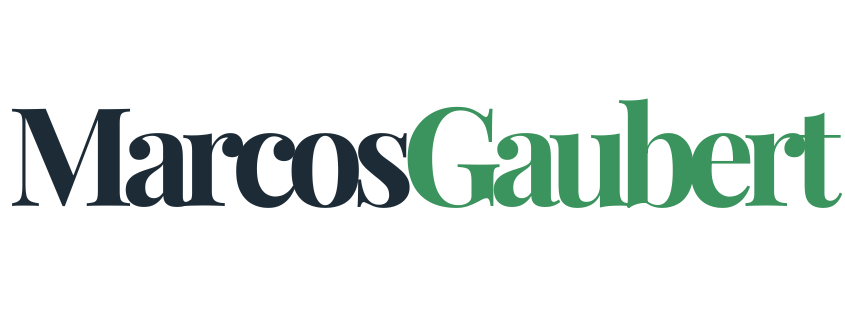In today’s competitive sales environment, clinging to outdated methods can put your business at a significant disadvantage. At SalesHacker, we know that mediocrity is not an option. Modern sales tactics require precision, speed, and impact to achieve success. If you’re still using old-school approaches, it’s time to revamp your sales strategies for the modern era. Let’s break down the top five outdated sales strategies and how you can transform them to improve sales efficiency and stay ahead of the competition.
1. Cold Calling Without Research
Outdated Approach:
Randomly calling prospects without doing any prior research, hoping to hit a lucky lead.
Cold calling in its original form—blindly reaching out to strangers—is an ineffective use of time. In a world where sales are increasingly driven by personalization and data, the “spray and pray” technique no longer holds up. It doesn’t just waste time; it can harm your reputation in the long run.
New Strategy: Research-Driven Cold Outreach
Revamp this tactic by conducting thorough research before contacting any prospect. Use tools like LinkedIn, Google, and social media to gather insights into your prospect’s business, their pain points, and potential solutions you can offer. Instead of cold calling, think of it as warm calling—your approach is informed and personal, setting the stage for a meaningful conversation.
Tip:
Leverage platforms like LinkedIn Sales Navigator to filter prospects based on specific industries, company size, or recent activities. Engage with their content before reaching out to demonstrate you’re already invested in their world.
Example:
You’re pitching SaaS software to a tech company. You notice that the decision-maker recently shared an article on digital transformation. Reference that in your outreach, positioning your solution as a key driver for their transformation efforts. This personalized approach is far more likely to yield results.
2. One-Size-Fits-All Pitches
Outdated Approach:
A one-size-fits-all pitch is an outdated relic that simply won’t cut it in today’s sales landscape. Modern buyers expect personalized solutions, and delivering the same pitch to every prospect is a quick way to lose their interest.
New Strategy: Personalized, Value-Driven Pitches
Using a generic sales pitch for every prospect, regardless of their specific needs or industry.
To align with modern sales tactics, every pitch needs to be customized. Dive deep into each prospect’s unique challenges, goals, and industry trends. Tailor your presentation to show how your solution solves their specific problems, not just any problem.
Tip:
Create a flexible pitch template that allows you to easily tweak key points based on the prospect’s specific pain points, industry, and goals. Keep the framework, but make room for personalization in every conversation.
Example:
If you’re selling marketing automation to a retail company, your pitch to a CEO should focus on efficiency and ROI. But if you’re talking to the VP of Marketing, emphasize features that improve customer segmentation and nurture workflows. Tailoring your approach ensures that you’re addressing what matters most to each decision-maker.
3. Ignoring Data and Analytics
Outdated Approach:
Making sales decisions based on intuition rather than solid data.
Relying on gut feelings or personal experience to guide your sales process is a dated approach. Modern sales tactics revolve around data-driven decisions, where analytics provide clarity on customer behavior, lead performance, and which strategies are working.
New Strategy: Leverage Data and Analytics
Utilizing data to guide your sales strategies is crucial for improving sales efficiency. Monitor everything from lead sources and email open rates to conversion rates and deal cycles. The insights gleaned from data can help you optimize your sales process at every stage, ensuring more informed decisions and better results.
Tip:
Invest in CRM tools like HubSpot or Salesforce that provide real-time analytics. Use these insights to spot bottlenecks, identify high-performing strategies, and adjust as needed.
Example:
Suppose you’re tracking two sales campaigns—one focused on direct email outreach and the other on social media engagement. Data shows that the email campaign is outperforming social media in terms of lead conversions. This allows you to adjust your strategy and allocate more resources to the email campaign while refining your social media approach for better results.
4. Overemphasis on Closing
Outdated Approach:
Focusing solely on closing the deal without considering the long-term customer relationship.
In the past, sales was all about closing the deal. While that’s still important, modern sales strategies emphasize relationship-building over quick wins. Customers today have more options, and they expect an ongoing relationship rather than a one-time transaction.
New Strategy: Focus on Relationship-Building
The best modern sales tactics prioritize building long-term relationships. Satisfied customers are more likely to make repeat purchases, provide referrals, and become brand advocates. Prioritizing customer experience over aggressive closing can boost loyalty and lifetime value.
Tip:
After every interaction, ask yourself: How can I add value to this prospect or customer beyond the sale? Whether it’s providing helpful insights, sharing industry news, or simply following up with care, relationship-building pays dividends over time.
Example:
You’re negotiating with a prospect who isn’t ready to commit. Instead of pushing harder for a close, offer them a personalized demo or a free trial, along with a case study relevant to their industry. Follow up with genuine interest in how the product is addressing their needs, rather than just focusing on sealing the deal.
5. Manual Processes
Outdated Approach:
Relying on manual paperwork and outdated processes to manage sales tasks.
In the digital age, manual processes are a massive drain on productivity and leave too much room for human error. Tasks like following up with prospects, data entry, and even client onboarding should be automated for maximum efficiency.
New Strategy: Automate Routine Tasks
Sales teams that utilize automation tools to handle routine tasks experience more streamlined operations, fewer errors, and more time to focus on what truly matters: selling. Use a CRM system to automate follow-ups, data entry, and client communication.
Tip:
Set up automated email workflows for different stages of the sales funnel. For example, when a lead downloads a whitepaper, automatically send a follow-up email with additional resources to nurture their interest.
Example:
With a CRM like Salesforce, you can automatically track every interaction with a prospect, schedule follow-ups, and move deals through the pipeline without the need for manual input. This automation boosts accuracy, improves response times, and frees up valuable time for sales reps to focus on relationship-building.
Conclusion: Embrace Modern Sales Tactics to Stay Ahead
The sales landscape has evolved, and it’s time to leave outdated practices behind. By adopting modern sales tactics like personalized outreach, data-driven decisions, and automation, you’ll significantly improve your sales efficiency and gain a competitive edge in today’s fast-paced market.
At SalesHacker, we specialize in helping small to medium business owners and sales professionals transform their sales strategies for precision, speed, and impact. Ready to improve your sales efficiency? Contact us today to revitalize your sales process and take your business to the next level.





